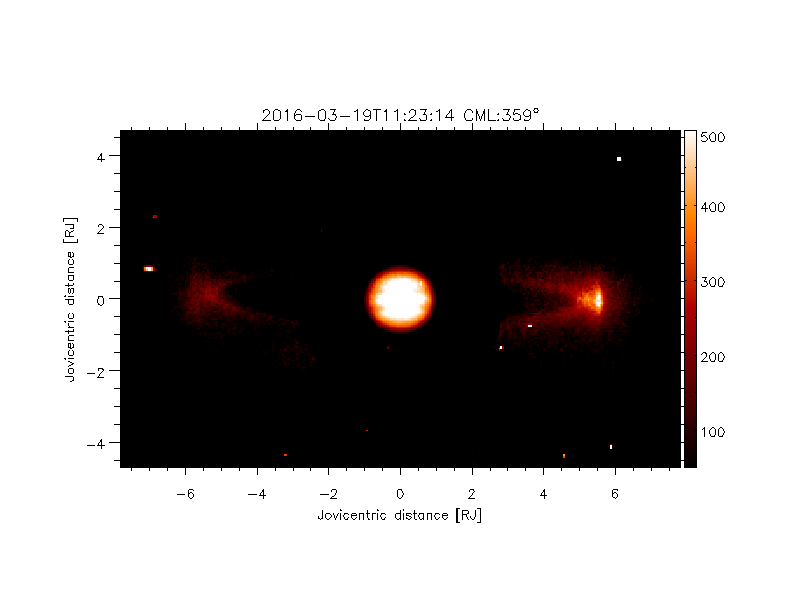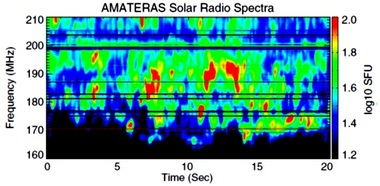Sun and Planets
This post is also available in: Japanese
Io and Jupiter’s aurora
We observed the emissions from atomic oxygen and sodium around Io that is originated from the volcanoes on Jupiter’s moon Io, and found that the environment surrounding Jupiter was changing dramatically due to volcanic activity of Io.
HISAKI / sprint-a
Tohoku University Haleakala Observatories

Fig. A series of observation of Io plasma torus obtained with Haleakala T60/Vispec.
Enceladus torus and Saturn’s inner magnetosphere
Saturn’s magnetosphere is dominated by water group neutrals. The main and important source of them is active water plume on Enceladus. We successfully carried out ground-based observations of emission from atomic oxygen in the Enceladus torus over three years.

Fig. Example of modeling result of Enceladus oxygen atom torus emission.
Particle acceleration and plasma transportation processes based on the observations of solar radio and optical emissions
We are observing solar radio emissions using the wideband metric radio spectro-polarimeter installed on the Iitate Planetary Radio Telescope (IPRT/AMATERAS) to investigate small-scale particle acceleration processes and the related phenomena in the solar atmosphere, and their relations with solar energetic particle event (SPE) affecting human activities in space and high altitude region. We have also developed new wideband radio observing instruments for revealing whole feature of particle acceleration phenomena and detecting lower frequency solar radio emissions which are considered to be related with occurrence of SPE. The daily spectral data have been opened from the following web; https://pparc.gp.tohoku.ac.jp/data/iprt/. Furthermore we have started to investigate plasma transportation processes associated with the flux emergence in solar active regions.

Fig. Micro structure of solar Type-I radio burst observed with IPRT/AMATERAS (after Iwai et al., ApJL, 2013).
Variation characteristics of Jupiter’s magnetosphere by the radio wave observations
Jupiter has the strongest magnetic field and fastest rotation among the planets in our solar system. Its plasma composition further adds the unique characteristic to Jupiter; i.e., Io’s volcanic heavy ions are dominant plasma component in Jupiter’s magnetosphere. These unique features bring two types of magnetic energies to Jupiter’s magnetosphere; one is brought by the fast rotational heavy plasma with the strong magnetic field, and another one is by the interaction between solar wind and Jupiter’s magnetosphere (like the earth). These energy supply processes give various radio emissions in the magnetosphere. In order to reveal variation characteristics of Jupiter’s radio emission and their physical processes in the magnetosphere, particularly origin of variable features of synchrotron radiation from the radiation belt and that of quasi-periodic radio phenomena, we have investigated Jupiter’s radio emissions data observed with the radio telescopes in Tohoku Univ. and National Institute of Information and Communications Technology (NICT), the large radio interferometer in India (GMRT) as an international collaborative work, and with the database of scientific satellites.

Fig. Radio image map of synchrotron emission from Jupiter’s radiation belt observed with the GMRT at 610MHz. Jupiter seen in visible light is superposed.
Polarization observation of exoplanetary atmosphere
We are observing exoplanetary polarization using DIPOL-2 on the T60 telescope at Haleakaka, Hawaii. We carry the very accurate photometric monitoring measurement of exoplanetary polarization according to its orbital motion. This is an international work with researchers of University of Hawaii, Germany and Finland.
This post is also available in: Japanese
